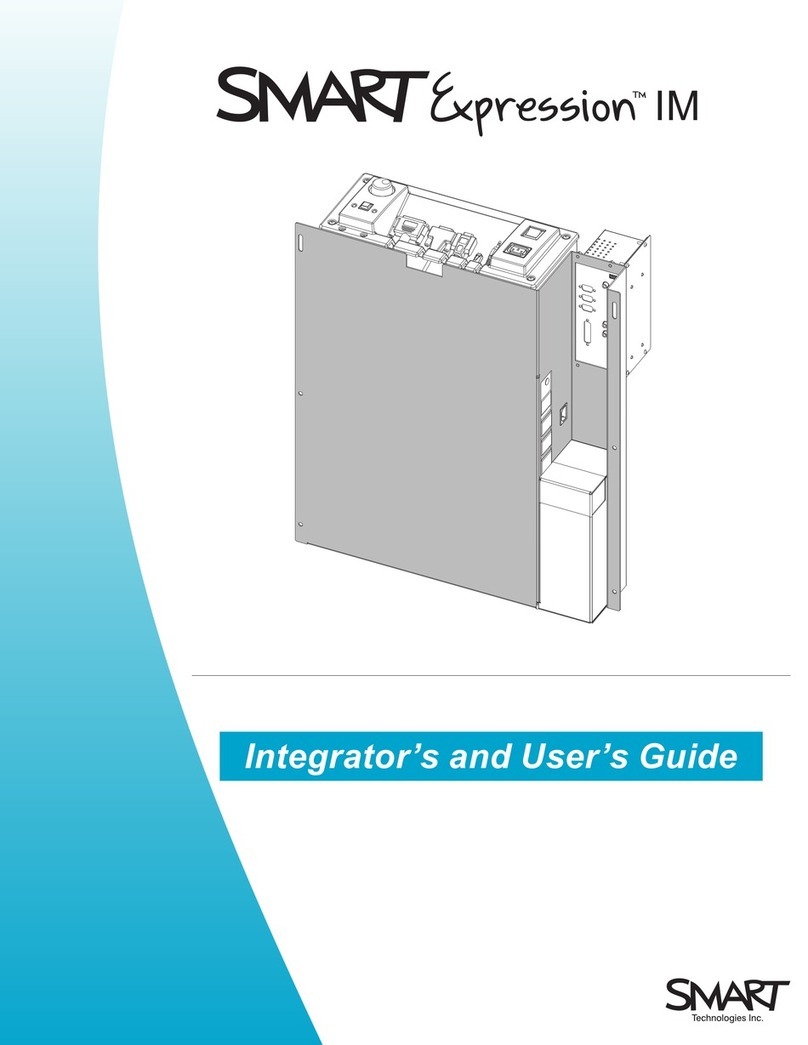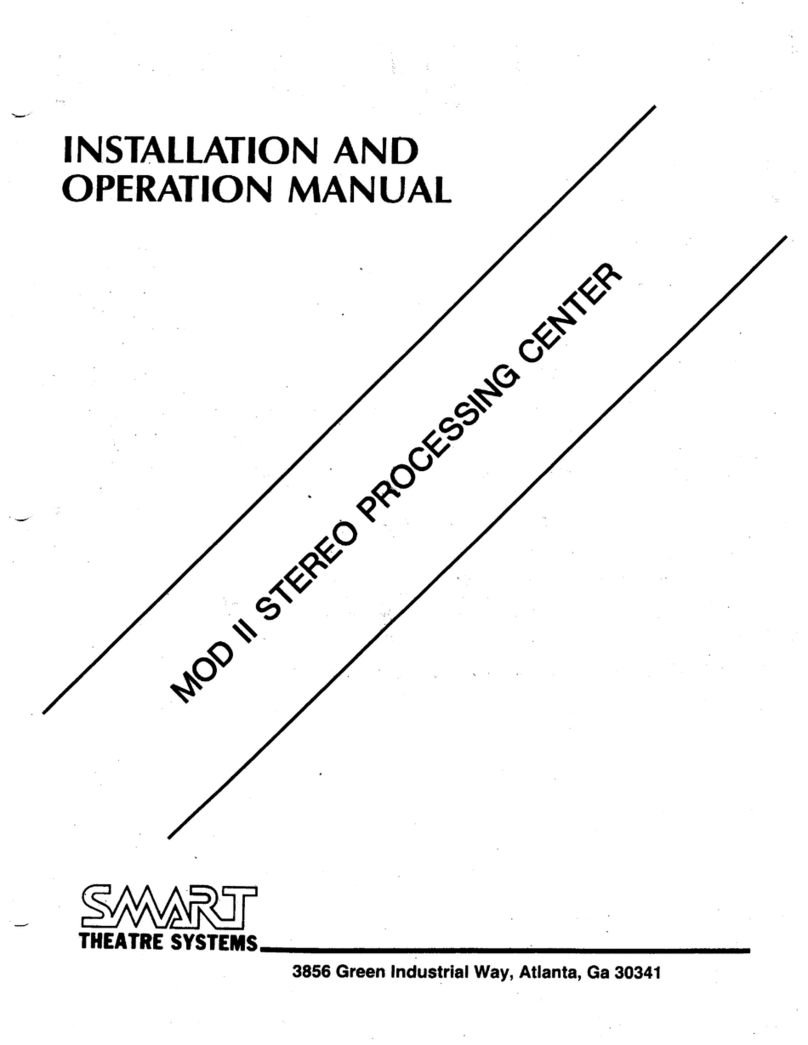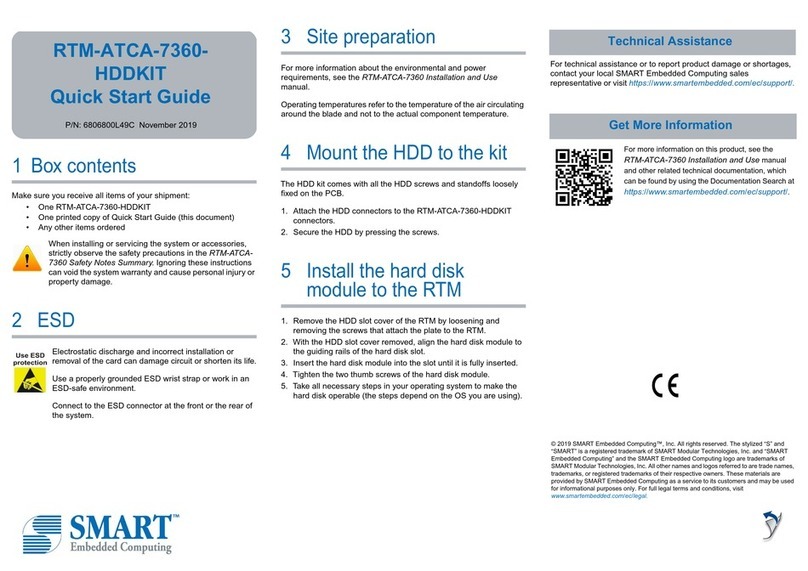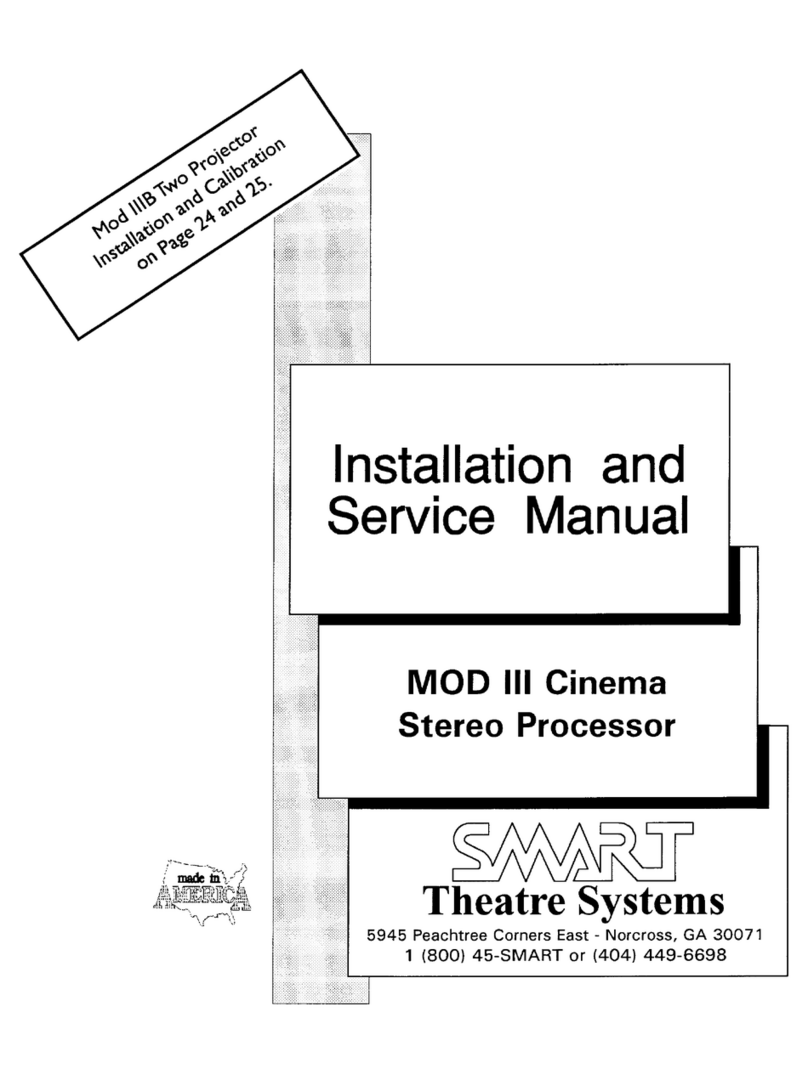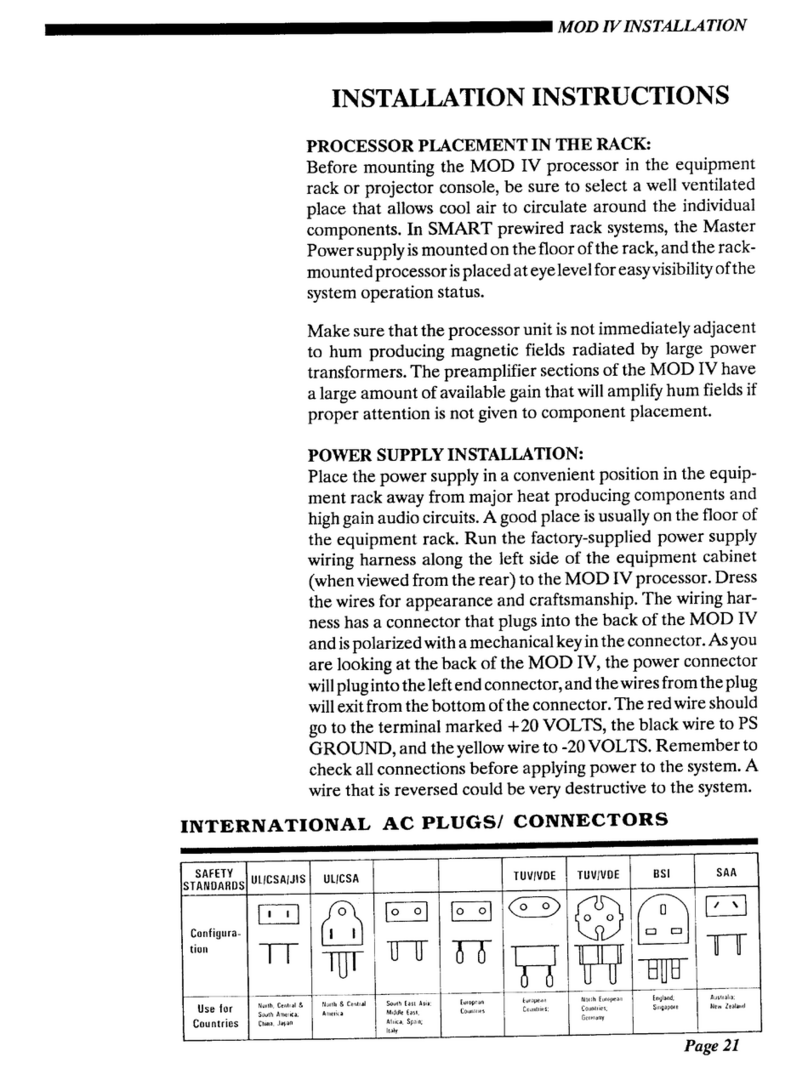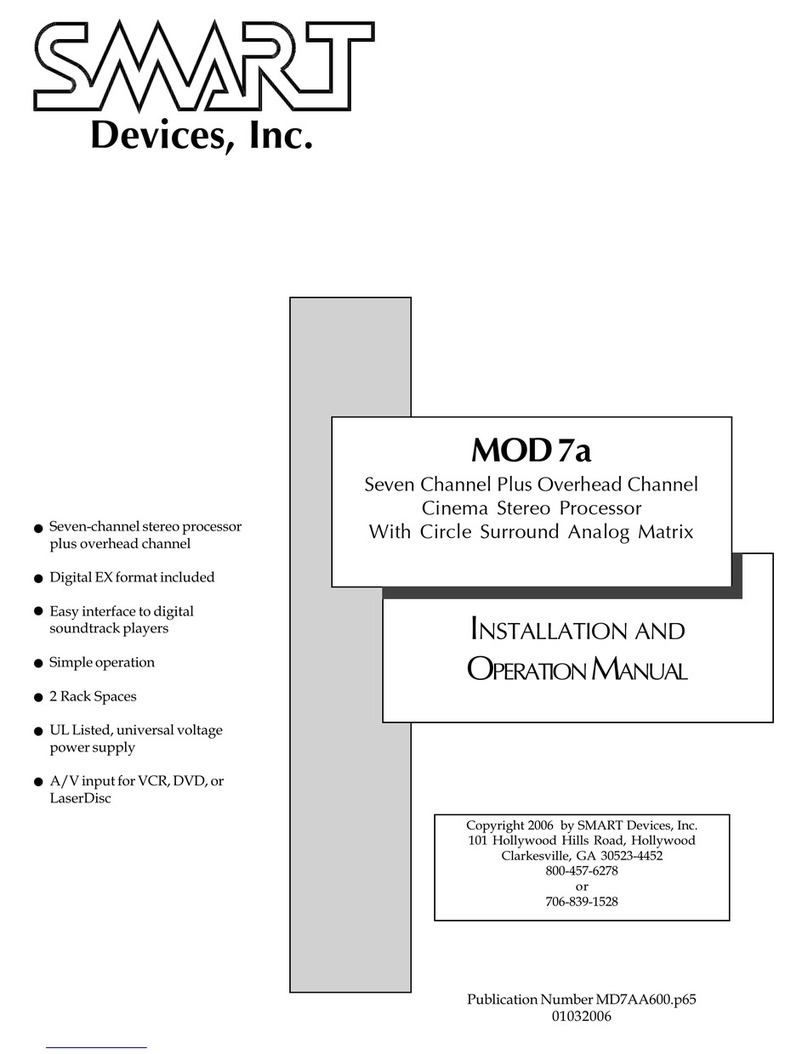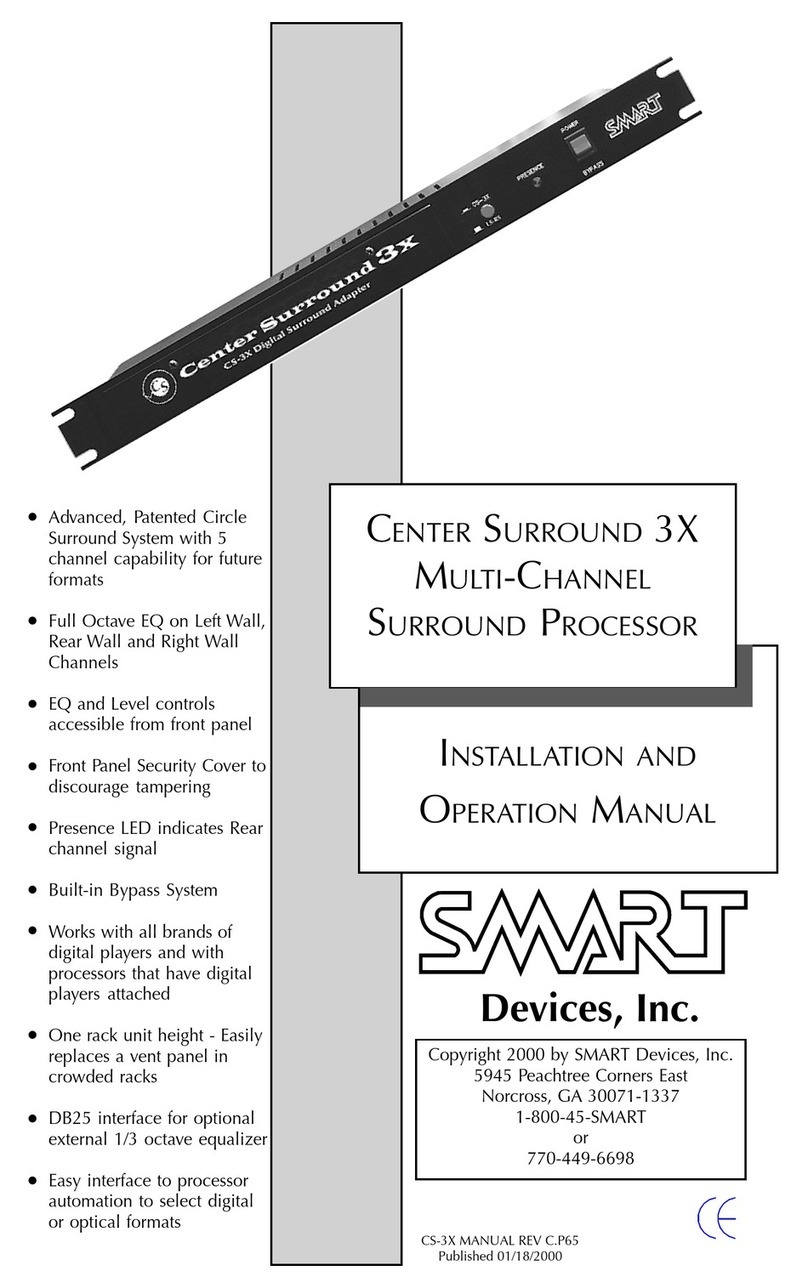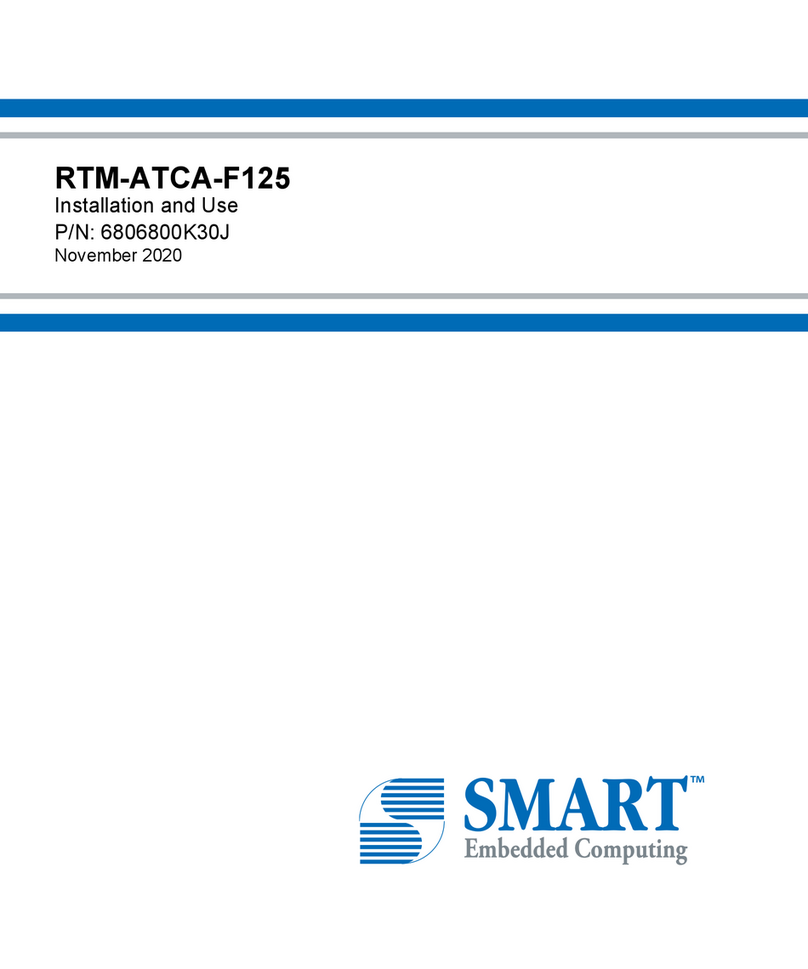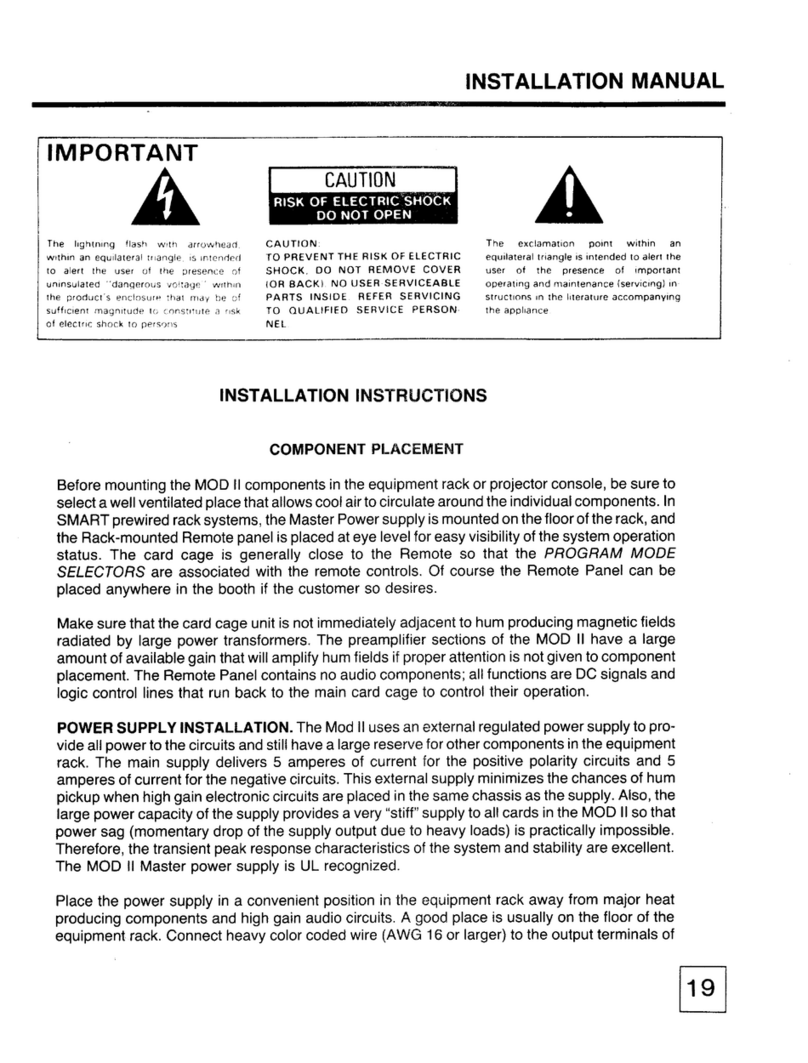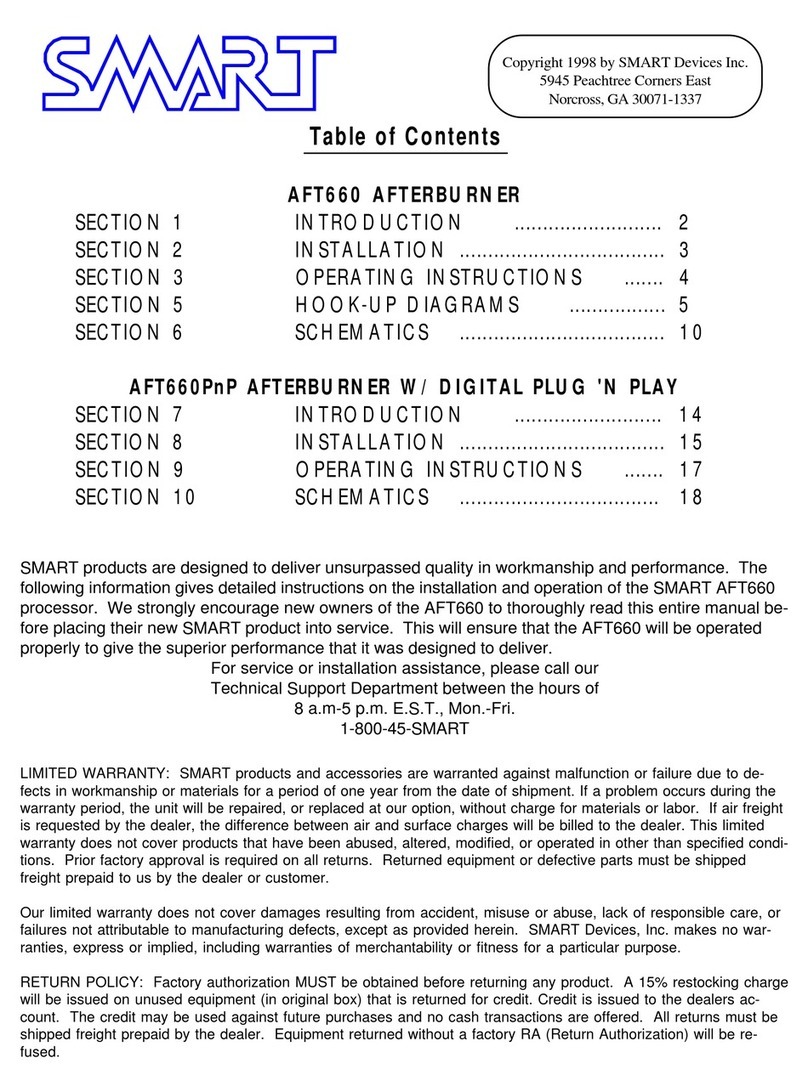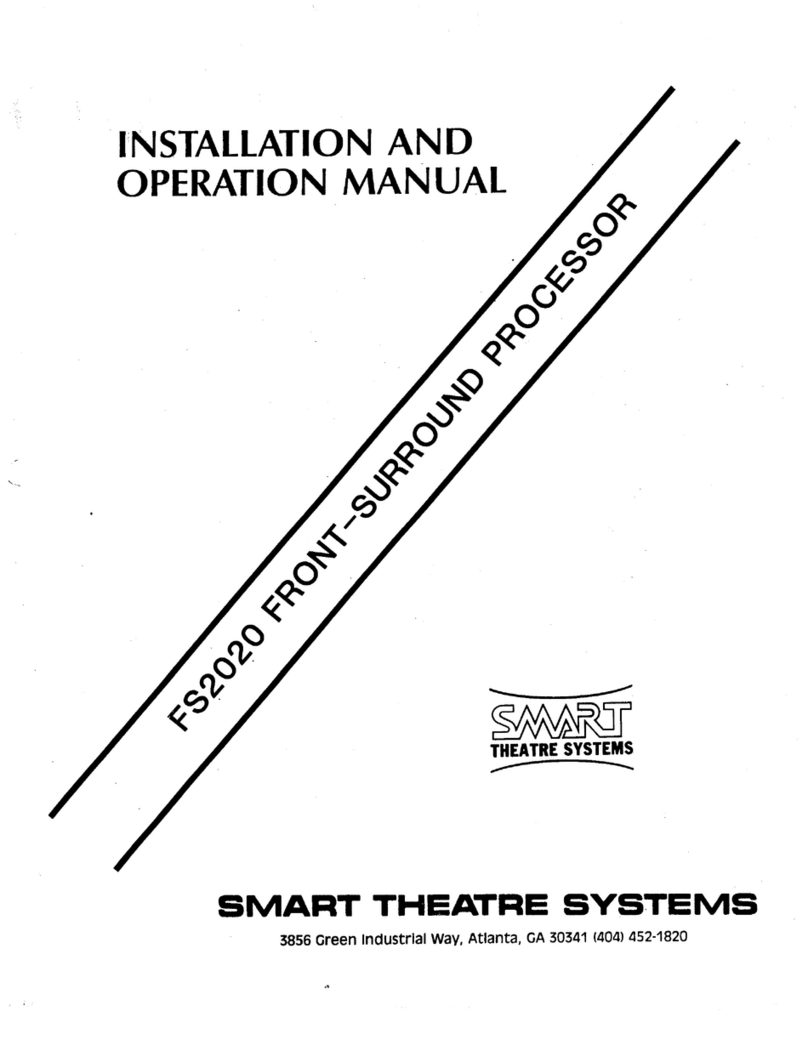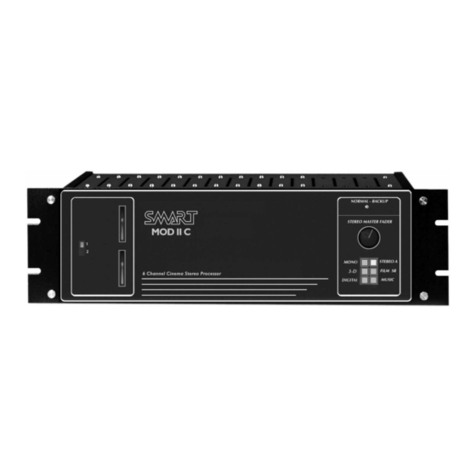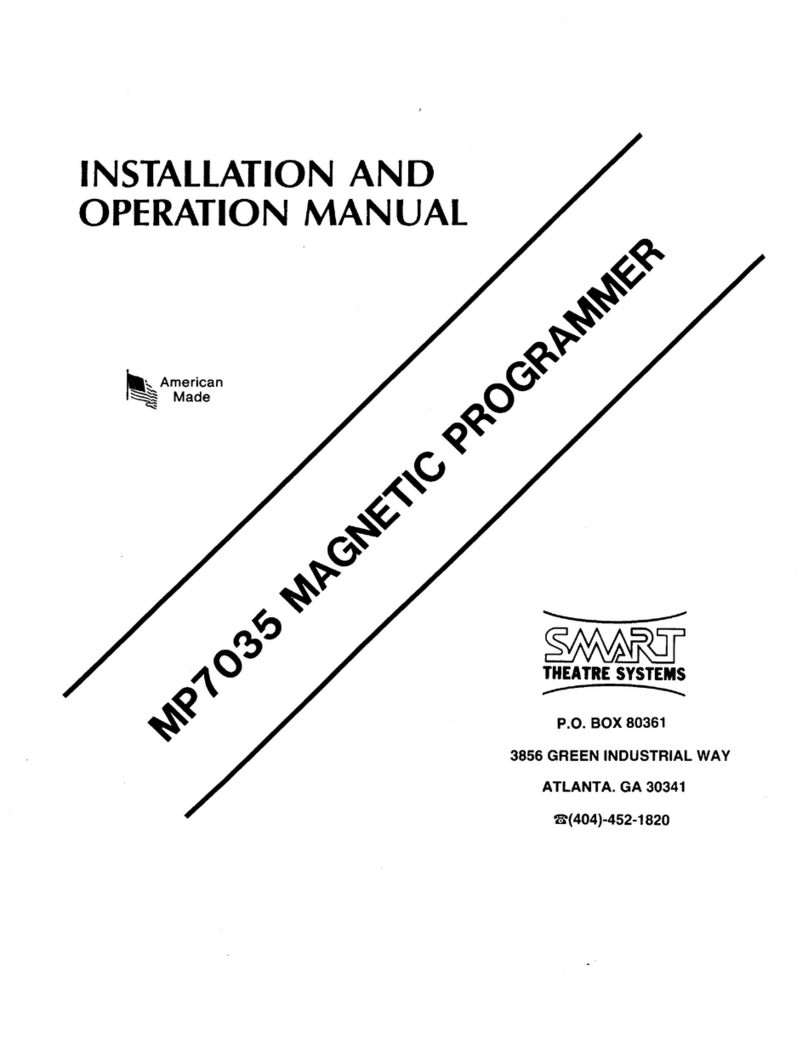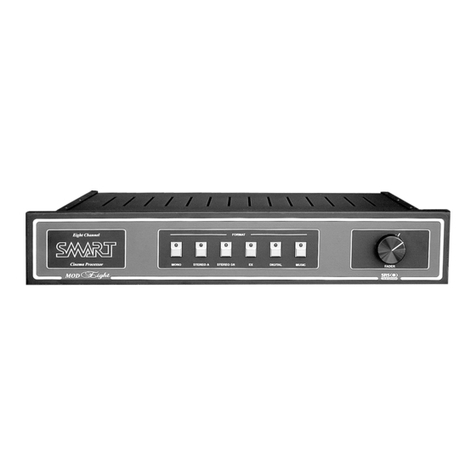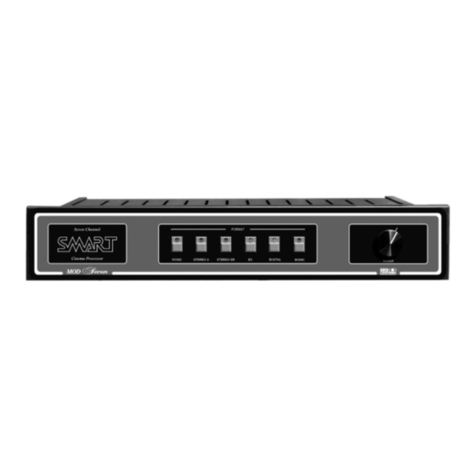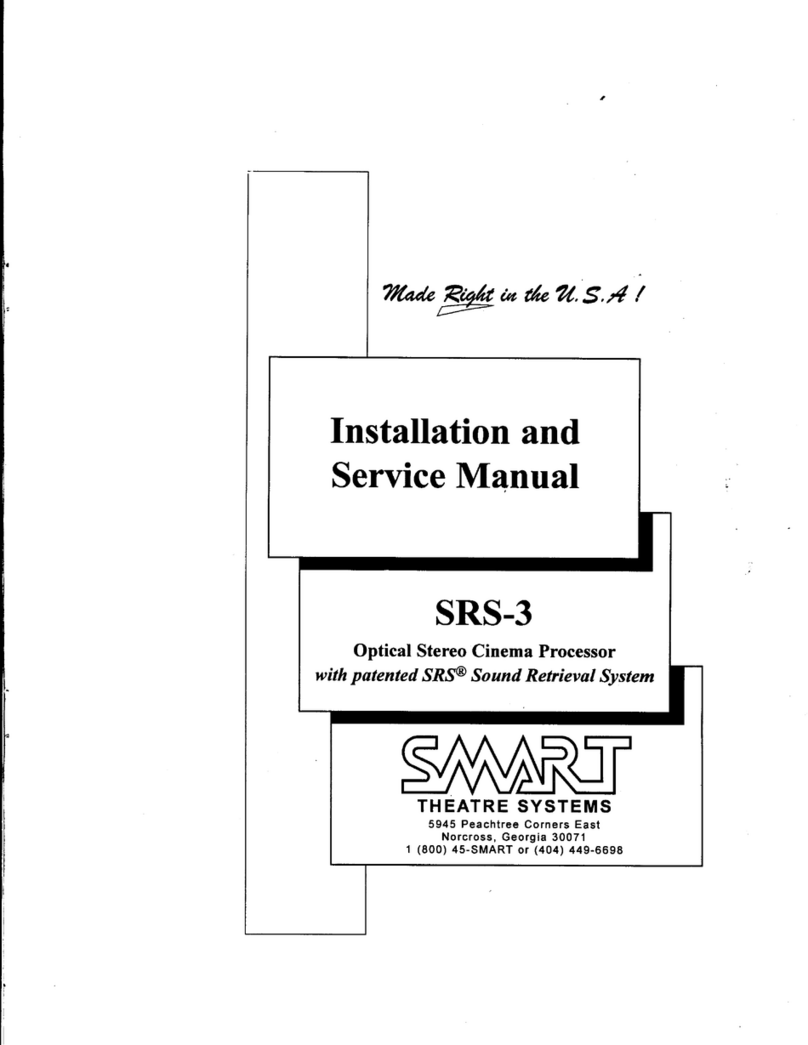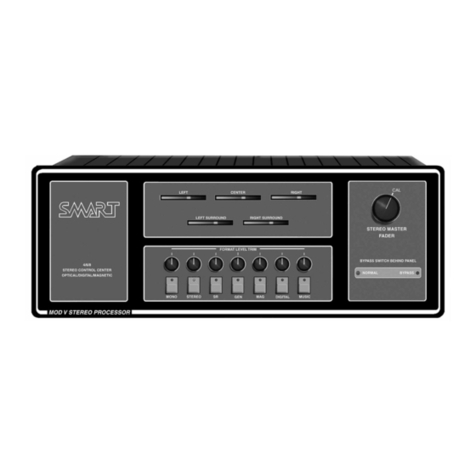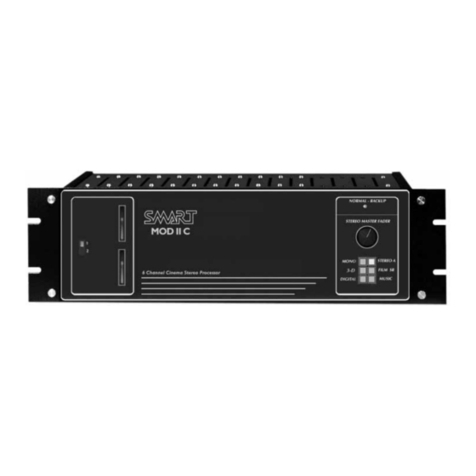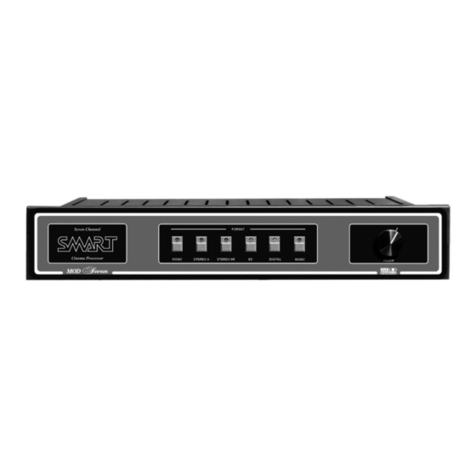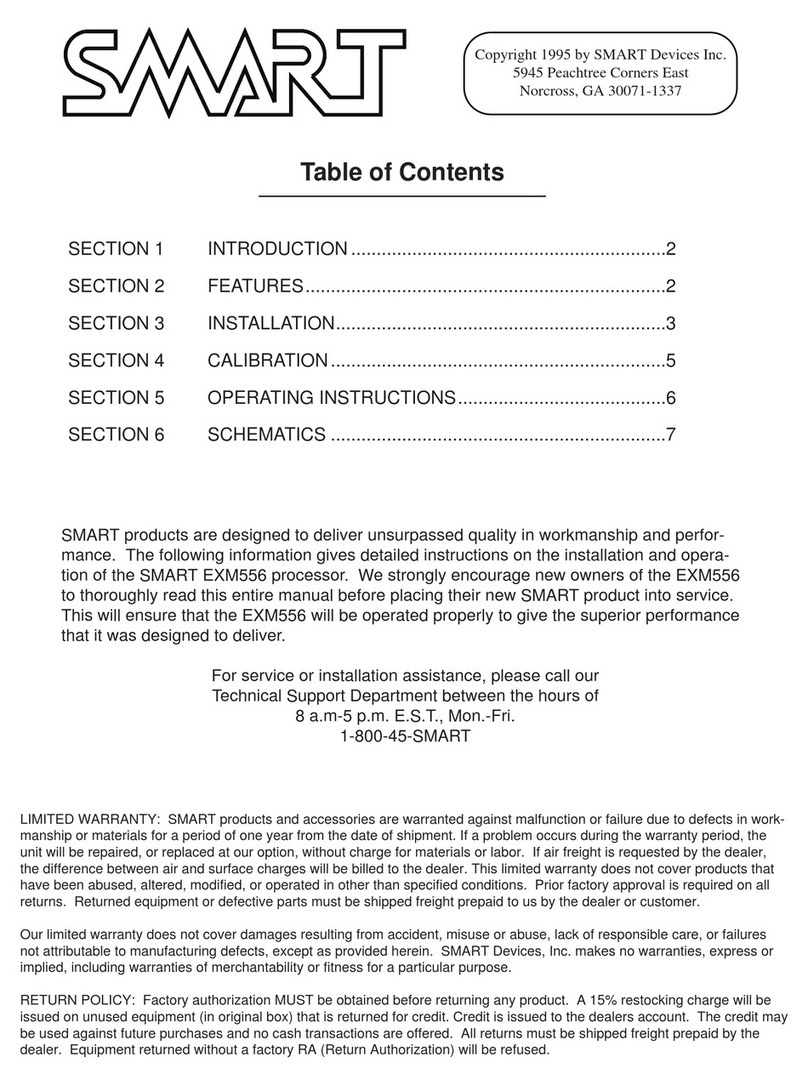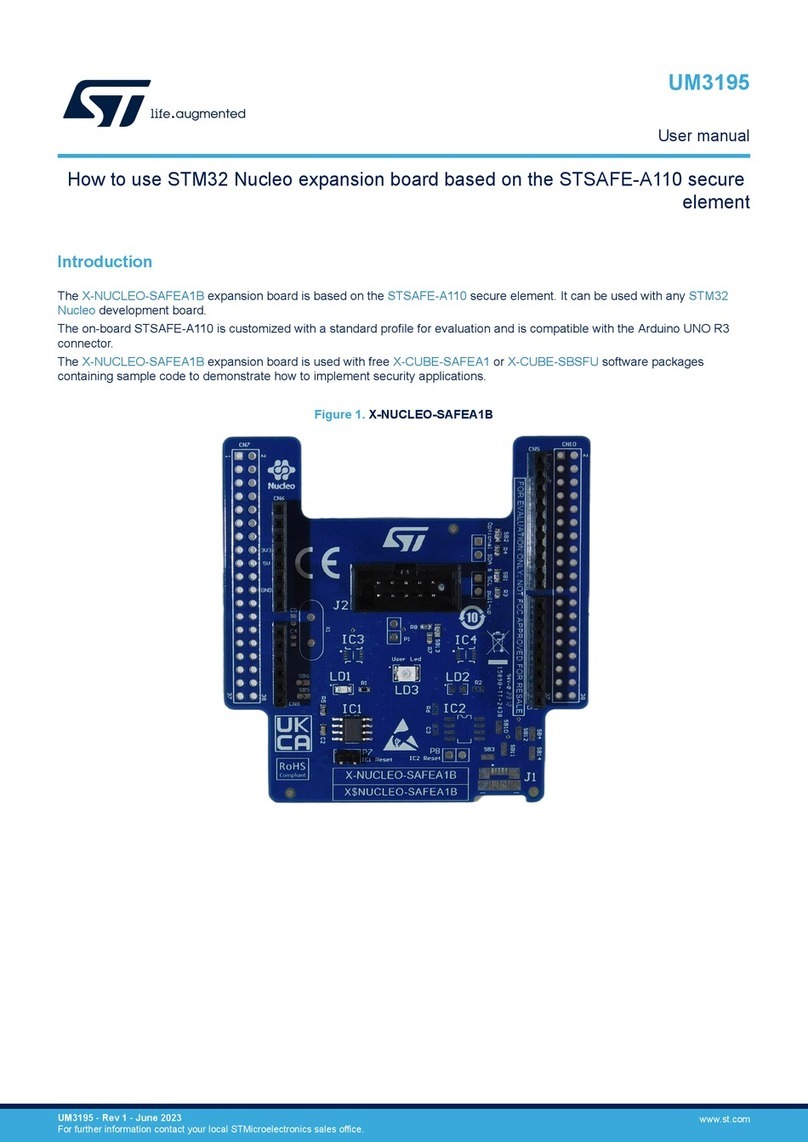
INSTALLATION & OPERATION
3
CircleSurroundDSP Matrix. The patented Circle Surround
produces 6 channels of audio from a standard optical stereo
soundtrack. It does this by sensing the slight phase bias on
the surround channel when digital masters are mixed down to
4-channel optical tracks. This means you can have split
surround optical sound presentations in auditoriums that are
equipped for split surround operation. SMART is the first
manufacturer to introduce this technology into professional
cinemaapplications. TheDSPmatrixintheMODVIpro-
duces highly accurate decoding of the optical stereo or SR
soundtrack.
SRS3-DSoundEnhancement. The patented SRS enhance-
ment is a standard feature of the new MOD VI. No longer an
expensive option, this process can be turned on or off from a
front panel operator switch or by automation. The MOD VI is
the first processor to be able to use SRS on optical stereo
tracks and digital soundtracks. This process is not active in
theaters using Front Surround Mode.
FaderControl/RemoteEqualizationSettings. TheMOD VI
has one master FADER that controls the overall playback
level for all six channels. This master fader is used as the
volume control for all formats. The individual left and right
master music level controls are located to the front right of
the main circuit board (MR and ML). The octave equalization
settings (7 bands plus bass and treble) are set with potenti-
ometers on the front PCB panel, so re-equalizing the MOD VI
will not be necessary in the event of a main circuit board
replacement.
FormatSwitching. The formats available on the MOD VI are
Mono, Stereo A, Stereo SR, SRS On/Off, Digital and Music.
All formats may be manually controlled by the gray
pushbuttons on the front panel. Red Light Emitting Diodes
mounted in the front pushbuttons indicate the selected
format. The indicator LED’s are visible from a distance so it is
not necessary to be near the processor to verify the status.
Format switching is also possible by connecting an automa-
tion or remote switch contacts to the AUTOMATION
terminals on the back of the MOD VI.
SolarCell/Reverse Scan Inputs. The MOD VI has stereo
solar cell inputs with electronic changeover for two projec-
tors. Each pair of stereo cell inputs is an electronically
balanced circuit that helps to reduce any interference pickup
on the solar cell leads. Separate “neutral” leads for right and
left channels allow for Reverse Scan wiring.
DigitalInputs. TheMODVIisfullycompatiblewithpopular
digitalformats(i.e.DTS,DolbyDigital,etc.). The MOD VI
will easily handle the stage, split surround, and subwoofer
channels from an external digital decoder.
Music Inputs. The MOD VI is designed to process both
stereo and mono music sources from tape, CD or cartridge
players. The music is processed through the Circle Surround
matrix to produce 6 channels of sound from a stereo music
source. In addition, these inputs may be used as an A/V
input for use with VCR’s or laserdisc players. The music
inputs are run through the Circle Surround matrix.
SurroundChannelTimeDelay. The MODVIhasadigital
time delay circuit for the surround channel while playing
optical stereo prints. Time delay of the surround channel in
optical stereo mode is necessary for two reasons: 1) to mask
any front to surround crosstalk and, 2) to synchronize the
stage and surround channels to eliminate echo caused by
different sound path lengths from the stage and surround
speakers.
MainOutputs. The MODVIhassixoutputchannels:LEFT,
CENTER,RIGHT,LEFTSURROUND,RIGHTSURROUND
and SUB(woofer). The SUB outputs are balanced with SUB+
and SUB- terminals available. This allows a standard dual
channel amplifier to be used in mono bridged mode to feed a
subwoofer speaker.
MainPowerSupply. A fully-regulated switching power
supply is furnished with the MOD VI processor. This supply
is heavily filtered and supplies ample current for both the
positive and negative 15 VDC supplies, as well as the logic
level 5 VDC supply. This external power supply minimizes the
chances of hum pickup when high gain electronic circuits are
placed in the same chassis as a power supply.
EmergencySoundBackupPowerSupply. A120V backup
power supply is included with the MOD VI to power the
backup preamp built into the MOD VI. This will ensure that
you will never lose a show when using the MOD VI proces-
sor. The 120V backup supply delivers about 12 VDC at
100mA. For installations where 120V is not available, the user
should supply their own power supply. The output should
be 12VDC @ 100mA and be relatively ripple free. The bypass
capability is a standard feature on the MOD VI and is not an
extra cost option as it is on other systems. MONO BYPASS
supplies sound to the Center Channel only.
DigitalSmartPort. TheDigitalSmartPortallowsforfuture
upgrades in the MOD VI, including digital 1/3 octave
equalization and Afterburner effects, as well as an alternative
port for monitor signals.
SECTION 2
FEATURES
